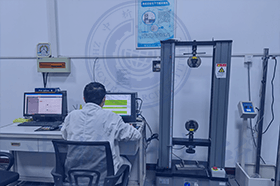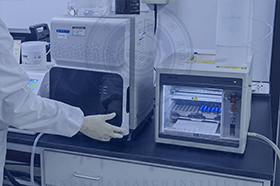檢測信息(部分)
Q1:塑料袋檢測產品的基本信息是什么?
A1:塑料袋檢測主要針對各類塑料材質制成的包裝袋,包括PE、PP、PVC等材料,用于評估其物理性能、化學安全性及環保指標。
Q2:塑料袋檢測的典型用途范圍有哪些?
A2:塑料袋廣泛應用于食品包裝、日用品零售、工業產品防護、醫療用品封裝等領域,需符合行業標準及法規要求。
Q3:塑料袋檢測的概要包含哪些內容?
A3:檢測涵蓋力學性能、有毒有害物質分析、降解性能、印刷安全性等項目,確保產品安全性和功能性達標。
檢測項目(部分)
- 拉伸強度:衡量塑料袋在拉力作用下的抗斷裂能力。
- 厚度偏差:檢測袋體厚度的均勻性,影響承重和密封性。
- 落鏢沖擊:模擬重物墜落時袋體的抗穿刺性能。
- 熱封強度:評估封口處的耐高溫和密封牢固度。
- 遷移量測試:分析塑料中化學物質向內容物的遷移風險。
- 重金屬含量:檢測鉛、鎘等有害物質的殘留量。
- 脫色試驗:驗證印刷油墨的抗摩擦脫落性能。
- 透氧率:評估塑料袋對氧氣的阻隔能力。
- 生物降解率:測定可降解塑料袋的環保性能。
- 燃燒性能:檢驗材料的阻燃或易燃特性。
- 溶劑殘留:檢測生產過程中有機溶劑的殘留量。
- 耐候性:模擬紫外線、濕度等環境對材料的影響。
- 抗靜電性:評估袋體表面靜電積聚風險。
- 密封泄漏:測試袋體接縫處的密封完整性。
- 甲醛釋放:檢測可能存在的甲醛污染問題。
- 氣味等級:評估塑料袋是否存在刺激性異味。
- 可溶性物質:分析接觸液體時溶出物的安全性。
- 抗老化性:模擬長期使用后的材料性能變化。
- 印刷附著力:測試圖案文字與袋體的結合強度。
- 尺寸穩定性:驗證高溫或低溫下的形變程度。
檢測范圍(部分)
- 高密度聚乙烯袋(HDPE)
- 低密度聚乙烯袋(LDPE)
- 線性低密度聚乙烯袋(LLDPE)
- 聚丙烯袋(PP)
- 聚氯乙烯袋(PVC)
- 可降解塑料袋
- 復合膜塑料袋
- 真空包裝袋
- 鋁箔復合袋
- 背心式手提袋
- 自封口塑料袋
- 醫療廢物專用袋
- 食品接觸用塑料袋
- 抗靜電屏蔽袋
- 氣泡緩沖袋
- 冷鏈保溫袋
- 收縮包裝袋
- 農用薄膜袋
- 重型包裝袋
- 透氣性包裝袋
檢測儀器(部分)
- 電子萬能材料試驗機
- 氣相色譜-質譜聯用儀(GC-MS)
- 原子吸收光譜儀
- 透濕性測試儀
- 落鏢沖擊試驗機
- 熱封強度測試儀
- 紫外老化試驗箱
- 摩擦脫色試驗機
- 生物降解分析系統
- 紅外光譜分析儀
檢測標準(部分)
These test methods provide a field technique for the bacteriological analysis of electronic process waters. The sampling of these waters and subsequent bacteriological analysis may be critical to electronic product yields. Bacteria can be the prime source of harmful contamination which can significantly reduce the yield of satisfactory microelectronic device production.
The test methods described here may be used both to monitor the bacteriological quality of water used in microelectronic product processing and to locate the source of bacterial contamination in a water purification system.
These test methods are simple field methods combining sampling and bacteriological analysis techniques that do not require bacteriological laboratory facilities.
The test methods described employ culture techniques for bacteriological analysis. The user should be aware that such techniques cannot provide a complete count of the total viable bacteria present since clumps and clusters of bacteria will appear as one single colony when cultured and since some viable bacteria will not grow under the test conditions used. However a meaningful comparative bacteria count will be achieved by this method if the culturing of the sample is always done at the same temperature and for the same period of time. The temperature of incubation should always be at 28 x00B1; 2x00B0;C and the period of incubation should be 48 h (or 72 h if time permits). The period of incubation and temperature should be the same for all comparative studies.
1.1 These test methods cover sampling and analysis of high purity water from water purification systems and water transmission systems by the direct sampling tap and filtration of the sample collected in the bag. These test methods cover both the sampling of water lines and the subsequent microbiological analysis of the sample by the culture technique. The microorganisms recovered from the water samples and counted on the filters include both aerobes and facultative anaerobes.
1.2 Three methods are described as follows:
| Sections | |
| Test Method A--Sample Tap-Direct Filtration | 6 to 8 |
| Test Method B--Presterilized Plastic Bag Technique | 9 to 12 |
| Test Method B2--Dip Strip Technique2/Presterilized Plastic Bag |
1.3 This standard does not purport to address all of the safety concerns if any associated with its use. It is the responsibility of the user of this standard to establish appropriate safety and health practices and determine the applicability of regulatory limitations prior to use .
本標準適用于以淀粉和塑料樹脂為主要原料生產的薄膜、經熱合或黏合等制袋工藝加工制得的塑料購物袋,也適用于淀粉基塑料與其他材料復合的購物袋。
本標準不適用于僅以包裝使用且不以攜提為目的的淀粉基塑料袋如淀粉基塑料連卷袋(也稱撕裂袋或點斷袋)等。
本標準適用于以生物降解塑料樹脂為主要原料生產的薄膜、經熱合或黏合等制袋工藝加工制得的塑料購物袋,也適用于生物降解塑料與其他材料復合的購物袋。
本標準不適用于僅以包裝使用且不以攜提為目的的生物降解塑料袋如生物降解連卷袋(也稱撕裂袋或點斷袋)等。
本標準適用于以甘蔗、甜菜或原糖為直接或間接原料生產的白砂糖。
本標準適用于以機械杠桿傳力、通過游砣在計量標尺上的移動和(或)增砣的增減來平衡被測物的重量,通過計量杠桿的擺動來確定平衡狀態,從而獲得稱量示值的機械杠桿秤。
注:本標準所指機械杠桿秤主要包含機械臺秤、案秤、地上衡和地中衡等。
本標準適用于由含5個結晶水的硫酸銅及其生產中產生的雜質組成的硫酸銅。
本標準適用于工業氯酸鉀。
注:該產品主要用于印刷線路板、版畫制版的錒刻蝕液及制藥、染料‘煙霧型、摩擦型煙花爆竹的過火藥、結鞭爆竹中紙引和擦火藥頭及火柴、高氯酸鉀的生產;也可用于冶金、印染、造紙等行業。
本標準適用于制糖工業中利用甜菜、甘蔗等為原料生產的綿白糖。

檢測資質(部分)










檢測優勢
檢測實驗室(部分)





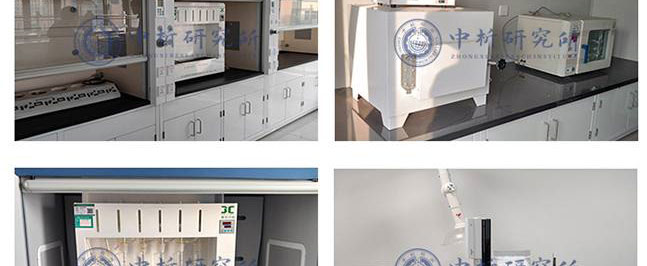
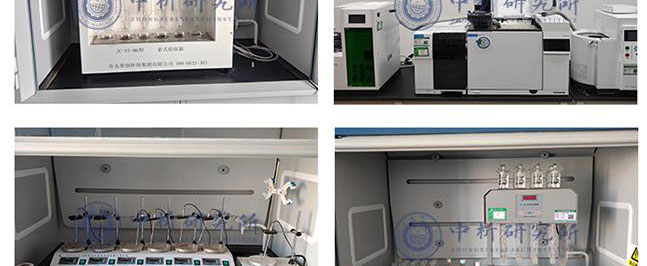
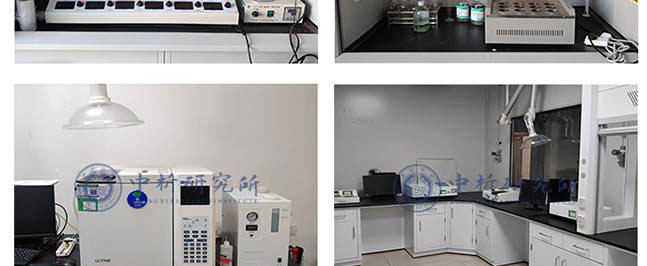
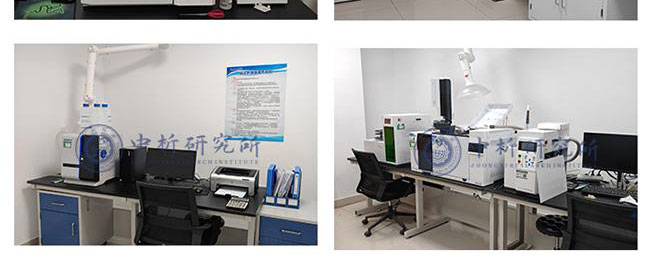
合作客戶(部分)





檢測報告作用
1、可以幫助生產商識別產品的潛在問題或缺陷,并及時改進生產工藝,保障產品的品質和安全性。
2、可以為生產商提供科學的數據,證明其產品符合國際、國家和地區相關標準和規定,從而增強產品的市場競爭力。
3、可以評估產品的質量和安全性,確保產品能夠達到預期效果,同時減少潛在的健康和安全風險。
4、可以幫助生產商構建品牌形象,提高品牌信譽度,并促進產品的銷售和市場推廣。
5、可以確定性能和特性以及元素,例如力學性能、化學性質、物理性能、熱學性能等,從而為產品設計、制造和使用提供參考。
6、可以評估產品是否含有有毒有害成分,以及是否符合環保要求,從而保障產品的安全性。
檢測流程
1、中析研究所接受客戶委托,為客戶提供檢測服務
2、客戶可選擇寄送樣品或由我們的工程師進行采樣,以確保樣品的準確性和可靠性。
3、我們的工程師會對樣品進行初步評估,并提供報價,以便客戶了解檢測成本。
4、雙方將就檢測項目進行詳細溝通,并簽署保密協議,以保證客戶信息的保密性。在此基礎上,我們將進行測試試驗.
5、在檢測過程中,我們將與客戶進行密切溝通,以便隨時調整測試方案,確保測試進度。
6、試驗測試通常在7-15個工作日內完成,具體時間根據樣品的類型和數量而定。
7、出具檢測樣品報告,以便客戶了解測試結果和檢測數據,為客戶提供有力的支持和幫助。
以上為塑料袋檢測的檢測內容,如需更多內容以及服務請聯系在線工程師。






